The wedding was celebrated, the gifts opened, it's time to think about cleaning the wedding attire. The celebration is fun, active, with a photo shoot in nature and dancing, contests and toasts. No matter how hard you try to behave yourself at the wedding, you cannot avoid troubles. At the end of the celebration in any case will have to bring it in order. If you have a question about how best to wash a wedding dress and what tools should be used, we will be happy to answer.
Hand washing
The second life of a wedding dress can be given independently at home. Dear to heart outfit requires special attention when washing and care should be careful. That is why hand washing is considered quality.
Assess pollution
The first step is to familiarize yourself with the information indicated on the tag, and be sure to comply with all conditions.
If there is an icon on it that prohibits cleaning at home, then the dress should be dry-cleaned. This also applies to stains that you cannot bring out on your own.
It is worth evaluating contamination before their removal begins. It is necessary to determine their nature and origin, stock up with the necessary means that will help to remove stains. Assess the state of the hem - this part of the dresses is the worst.
The choice of means and method of cleaning depends on the fabric. Each has its own individual characteristics that must be considered.
Partial soak
Partial soaking can be carried out only with the use of a liquid agent, which is designed to work with delicate fabrics. When the necessary portion of detergent is dissolved in warm water, you can soak only the most polluted part of the dress, for example, the hem.
You will need a toothbrush with soft bristles, with which the pollution will be erased. It is necessary to rub without fanaticism, delicate fabrics do not like sudden movements.
Watch out for the lining, which is also often decently soiled. After such simple procedures, you can rinse the treated areas with clean water.
Fight against stains
The fight against stains will not be a difficult process if you prepare for it in advance and follow some recommendations:
- stains from sweat. Turn the dress on the wrong side. Wet the lining in the area of the bodice with a prepared soap solution and wipe with a soap sponge or soft toothbrush with a toothbrush again. If you have to deal with a silk dress, then with such a delicate material stains from sweat are removed with the help of ordinary saline solution (a tablespoon of the most ordinary salt falls into a glass of water). Examine the remaining liner carefully and, if soiled, rub it with soapy water.
- Red wine. Now it's time to deal with the face of the dress. Red wine is removed by exposure to a hot soap solution.
- grass stains. Take 1 tbsp. warm water and 1 tsp. ammonia, mix and thoroughly blot the stain. Soap dry soap and wash.
If there are other spots, you can choose three ways to deal with them:
- thorough, but not strong rubbing with a soap sponge;
- use of concentrated detergent;
- treatment with an oxygen based stain remover.
Main wash
The main wash should take place in the following scenario:
- we collect warm water (30-40 degrees) in the bathroom or large basin and dissolve the detergent in it without aggressive action;
- we lower into the bathroom a dress for 2 hours;
- lightly rinse the dress in soapy water, paying special attention to places with particularly heavy soiling;
- rinse the dress in clear water until soap bubbles form in the water.
Dresses without heavy decorative elements, large accessories and embroidery can be erased in a suspended state. It will take hangers, shower hose and soapy water. It is necessary to erase very carefully, not allowing the product to stretch and stretch in a certain direction.
Machine washable
In fact, washing in a typewriter can be used, although many people find this method ridiculous and even dangerous. With the right approach, machine wash is still capable of making the dress as fresh and beautiful as it was originally:
- choose the most careful and delicate mode without spinning and with reduced cycle time;
- use only liquid and colorless detergent;
- so that the embroidery or the decor of beads does not lose its appearance, you can sew gauze on top;
- use of bulk bag for washing predominantly.
If the dress has a corset, then at a high temperature and high-speed washing it can lose its design. This will not be fixed.
A large amount of tulle and a large pomp in the skirt is the reason for use during the washing of starch. It can fall asleep in the compartment of the machine, which is intended for air conditioning. Such a simple method will help to return the dress to its original look and make it as presentable as it was before the wedding.
Washing the dress should not be put on the back burner, but be engaged in this process immediately on the second day.
Drying
Wash completed, the dress as new, left to dry the dress. It should be dried in a natural way. In no case do not squeeze, so as not to break the fabric, do not spoil the shape of the dress and leave the decor in the same way it was originally.
If the dress does not have a large number of layers, not puffy and not heavy, then it can be dried in limbo. If the dress is voluminous and has an impressive weight, then you need to allow the water to drain, placing it on a vinyl grid designed for drying clothes.
After the water is drained, the dress can be hung on the hangers and brought to fresh air. Carefully straighten the material over the entire length with a wet hand, excluding the presence of wrinkles. During ironing, you will be grateful for this.
The dress should not get the sun's rays and it can not be dried on the battery - in both cases it will turn yellow.
Ironing
Well, the important moment has come - ironing. If the dress is not stroked, it may remain dented forever.
Carry out ironing only on a perfectly clean surface of the ironing board. Also examine the surface of the iron - its purity should not leave any doubt.
You should know the material of which the dress was sewn, since delicate fabrics require special ironing:
- the atlas is smoothed not from the front side, but from the back. When steaming, water marks may remain;
- lace under the influence of high temperature may turn yellow or melted so that this does not happen it needs to be smoothed through cotton. The iron should work on the mode of ironing silk with steaming.
- lightweight fabrics with a flying effect can not be ironed at all, only to steam in limbo. Starting with the lining, you must steam each layer alternately.
You will definitely succeed if you show patience and be careful. Dress store in a case, folded in half. Periodically, he will need to get and air, plunging at the same time into happy memories.
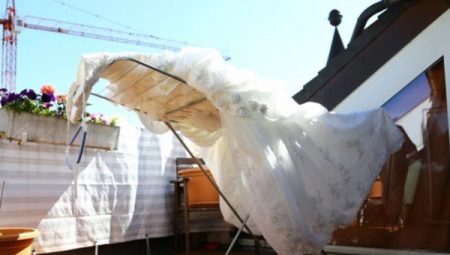
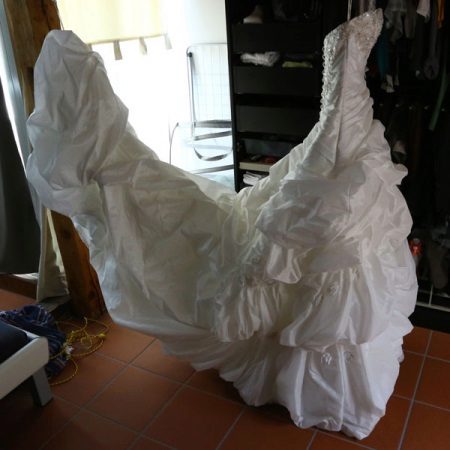

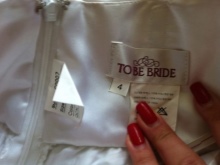
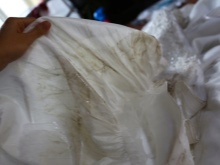
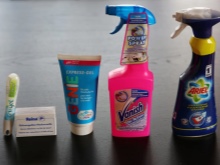
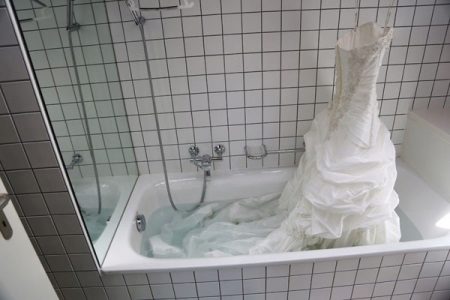
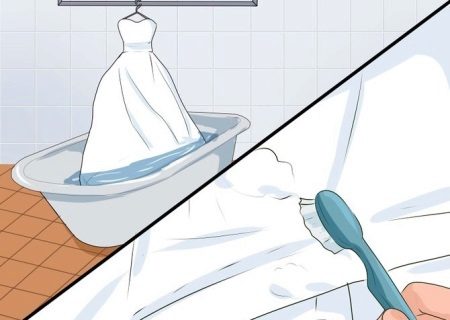
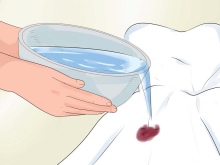
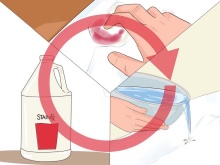



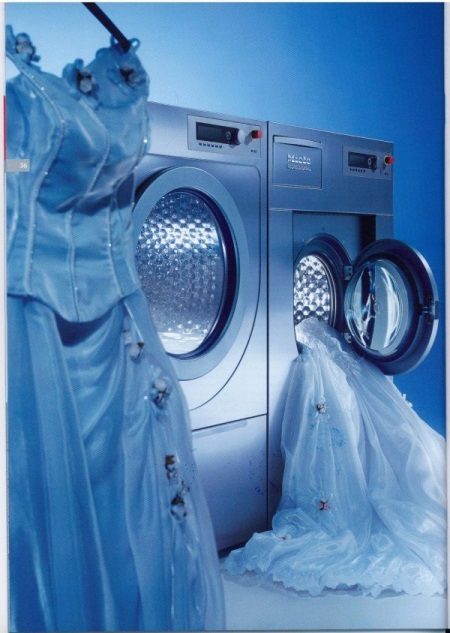
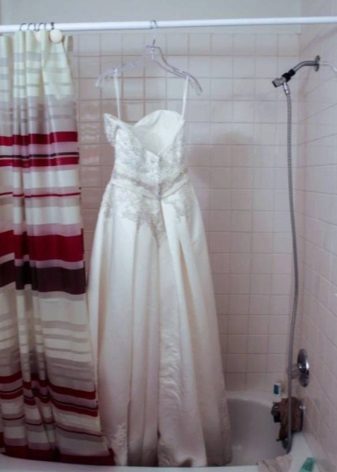
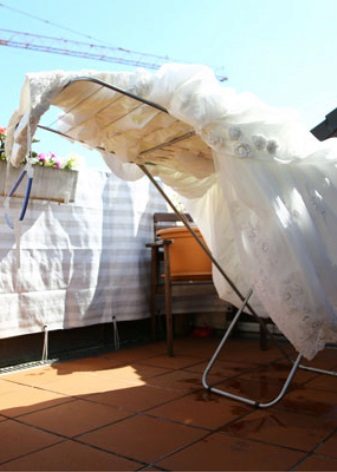
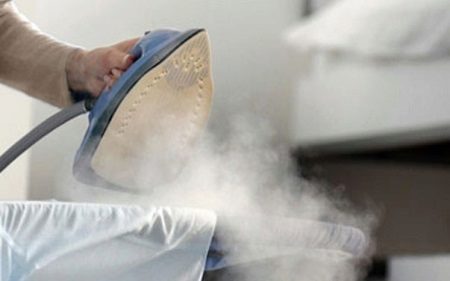
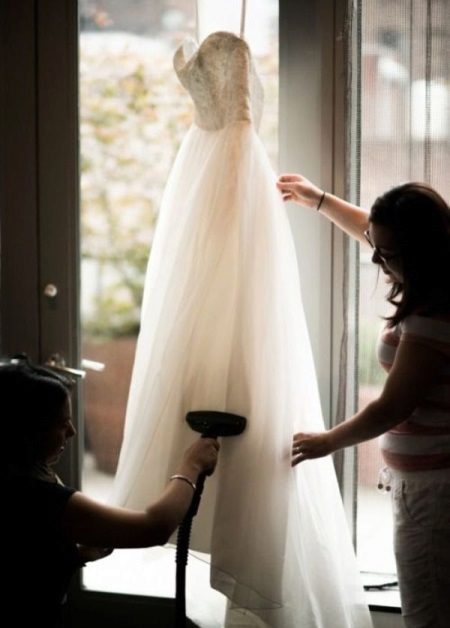










If you are planning to sell a wedding dress, it is better not to risk it and dry cleaning it.